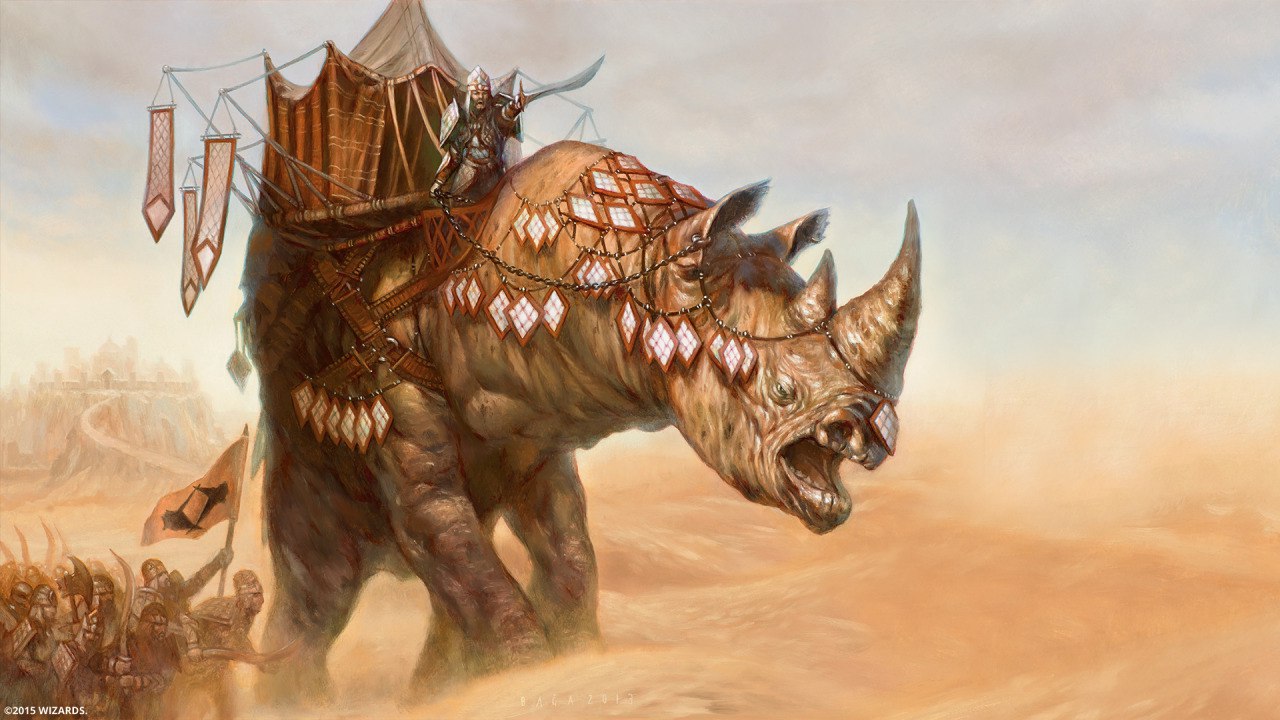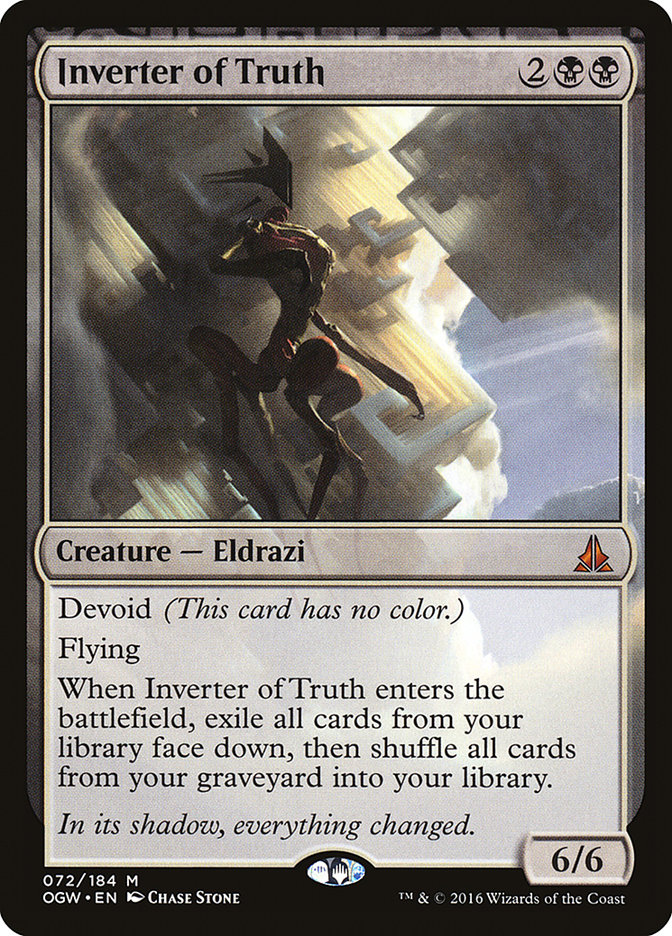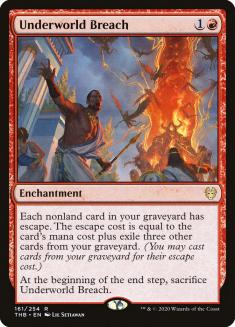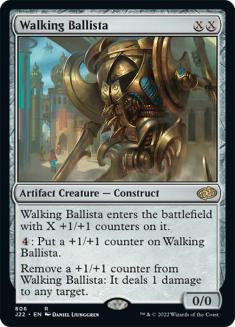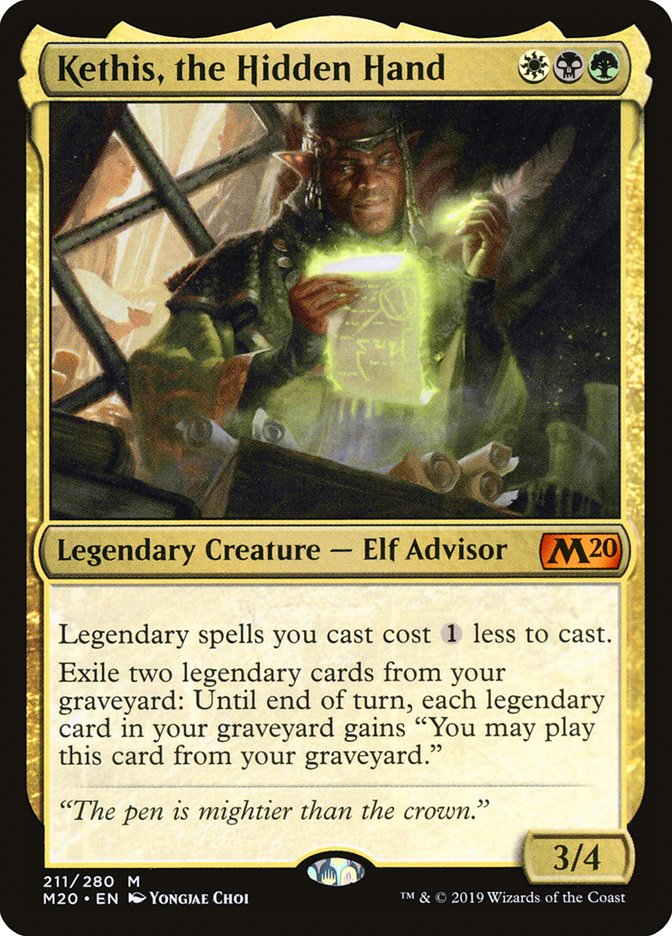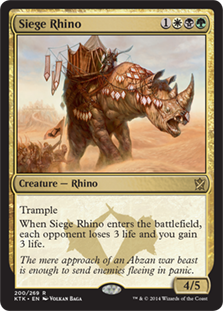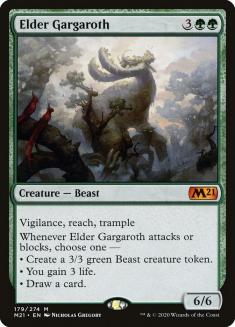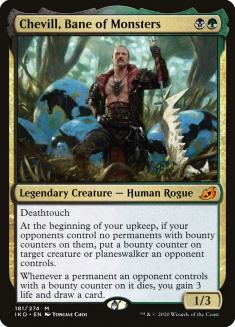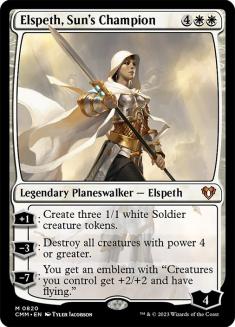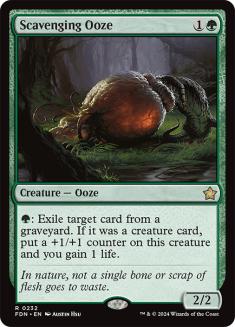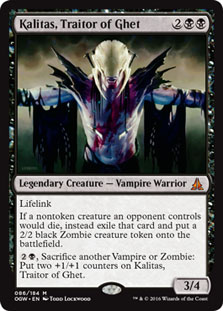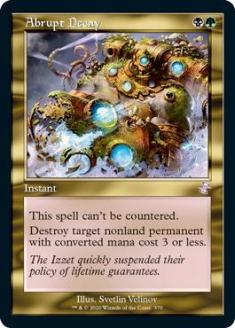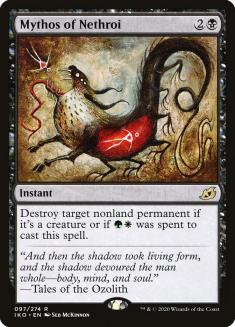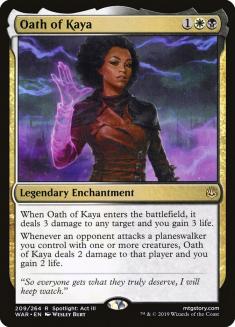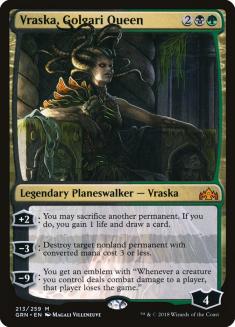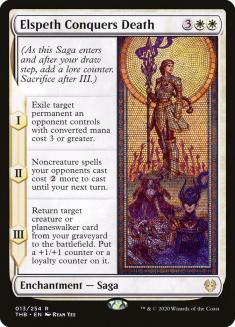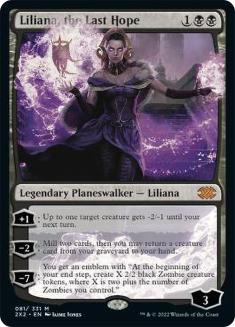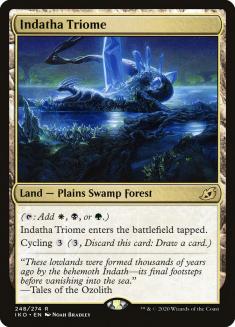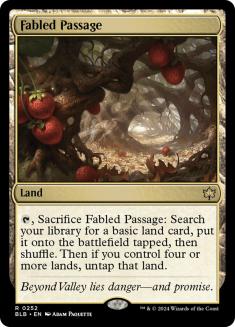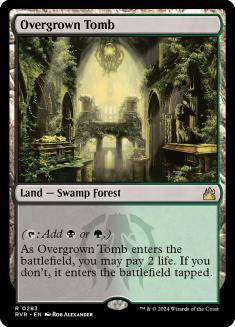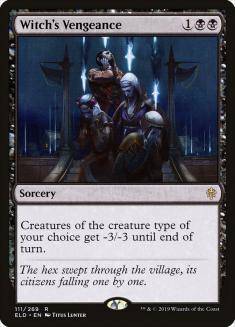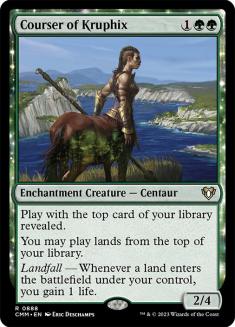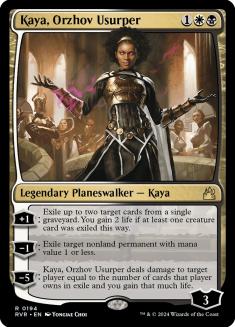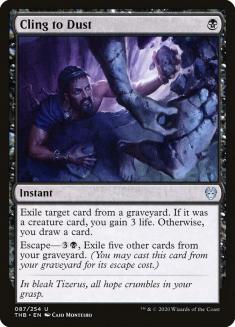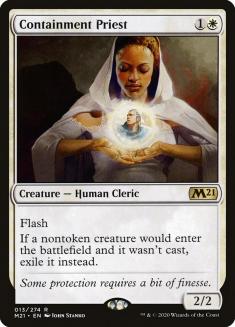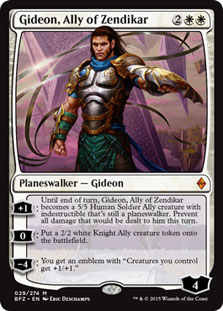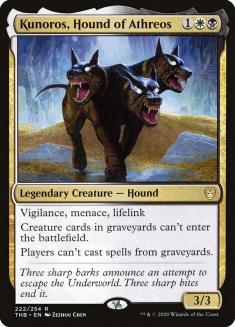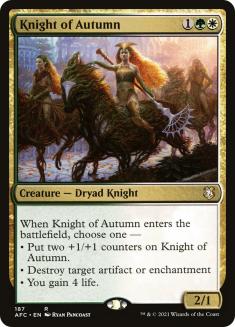On Monday, the following cards were banned in Pioneer:
Pioneer is back, baby! The last six months have been nothing but combo, but that’s all about to change. These combo decks suppressed the rest of the format, creating an environment where the only winning line was to not play. Now that these decks are out of the way, there is a lot of room for innovation and I’m happy to start brewing.
It’s only been a few days, and I’ve played about six Leagues so far with six different decks. The general feeling is that creatures are back on the menu, but they’re coming in a wide variety of shapes and sizes. The two decks I’ve played against the most: Bant Spirits and Naya Winota. They each have their strengths and weaknesses, and will likely become major players in the new Pioneer, but battling these monstrosities is a breath of fresh air compared to getting combo-killed every round by Dimir Inverter while they kill everything, make you discard every relevant spell, and then finally resolve Dig Through Time before closing the door.
The overwhelming ask on my stream was to come up with a new version of Abzan, specifically something revolving around Siege Rhino. I spent about half an hour brewing up a list with my stream community, taking card suggestions from chat and slicing and dicing until we came up with a heater.
Y’all welcome Pioneer’s newest midrange deck: Abzan Rhino.
Creatures (16)
- 3 Scavenging Ooze
- 4 Siege Rhino
- 1 Kalitas, Traitor of Ghet
- 4 Tireless Tracker
- 2 Chevill, Bane of Monsters
- 2 Elder Gargaroth
Planeswalkers (3)
Lands (24)
Spells (17)

The Threats
Welcome to the office of Dr. Rhinoceros Siegeman, M.D. where the only cure is more Siege Rhino. I don’t know what it is about this card, but it always seems to pull me back. When it was in Standard, many thought it to be the best card in the format. The drain allowed for huge swings in life total, giving you breathing room against aggro and stopping power against control. It was easily one of the most efficient creatures ever made, giving you absurd stats and a nice effect for a tight little four-mana investment.
The old saying goes: ban everything until Siege Rhino is the best card in the format, and then ban it too. It seems like they’ve banned enough things in Pioneer that Siege Rhino might end up being a great tool for midrange strategies, giving people a reason to play Abzan instead of shoving Uro, Titan of Nature’s Wrath into every strategy.
I love the aggressive slant you can take with Siege Rhino. Uro, Titan of Nature’s Wrath is almost strictly a midrange or control card, giving you little flexibility. It’s obviously a sick tool for those midrange or control decks, but Uro just doesn’t give you the flexibility that Siege Rhino brings to the table. Is Uro, Titan of Nature’s Wrath a better card overall? Yeah, probably. But if you have a good reason to play white, Siege Rhino is one hell of an addition to the strategy.
I wanted to try Elder Gargaroth in a format where its body and ability might have a chance against a non-aggressive deck. At first, I really hated this card. I felt like it was one of the most egregious examples of power creep in the modern era. However, after reflection and listening to differing opinions, as well as playing both with and against it, I’ve come to respect it for what it is: a product of the times we live in.
It doesn’t have haste or an enters-the-battlefield effect, but untapping with it provides a lot of value. It prevents your opponent from attacking if they can’t remove it, making it a phenomenal tool against Mono-Red or other aggressive strategies. The ability to choose the best mode for the given situation rewards you for getting to untap with this expensive Beast. It’s essentially a green Baneslayer Angel that has utility against a number of archetypes, but in actuality none of the abilities are all that punishing. If it hits you once, the game isn’t over. If it hits you twice or gets to block, things get a little more dicey, but that should just be the case for most five-mana creatures.
I was skeptical of Chevill, Bane of Monsters at first, but was pleasantly surprised at what happened after casting it for the first time. My opponent didn’t cast one of their creatures. I knew they had a creature from an earlier Thoughtseize. Their battlefield contained no threats, and instead of jamming one into my Chevill to get bountied, they chose to cast nothing. It seems obvious in hindsight, but “keeping your opponent from developing for fear of getting steamrolled” is like a hidden ability.
Chevill doesn’t kill creatures by itself. Instead, the threat of killing your creature is almost as powerful as killing it, drawing a card, and gaining some life. It doesn’t hit hard, but every game felt over almost immediately when I put a bounty on my opponent’s creature and then killed it. Turns out drawing a card and gaining some life is pretty good. Is that what everyone feels when they escape Uro?
I wanted one big card to draw toward, and Elspeth, Sun’s Champion is quite big and also quite good. It serves as a nice battlefield wipe if things get out of hand, but it’s ridiculous if cast on an empty battlefield. With the format moving away from combo, having a big powerful top-end spell that ends the game quickly is huge. It also helps that it leaves behind multiple bodies should your opponent answer it immediately.
A new addition to Standard, Scavenging Ooze has been a solid player in Pioneer for a while now. If your deck has removal, or perhaps just needs some way to interact with the graveyard, it’s hard to go wrong for a card as efficient as Scavenging Ooze. It outclasses most opposing threats in quick fashion while providing you with a life buffer and a safety valve for some of the degenerate graveyard decks in the format.
Playing four copies of trusty old Tireless Tracker is a big statement, but it’s one I’ll stand behind for now. It gets big in a hurry and is one of the easiest ways to snowball an advantage if your opponent starts to stumble. Tireless Tracker is one of those cards that always feels better than it looks on paper. For me, I just wanted something that was good both early and late.
You might not be able to sacrifice the Clue tokens immediately, but the overarching plan should involve accruing small advantages over time. Tireless Tracker embodies that completely while also growing huge. Before you know it, a single attack will end the game. But the thing I love most about Tireless Tracker is that it lets you use almost all of your mana every single turn.
Because we’re already playing Chevill, Bane of Monsters, our removal suite should focus on spells that kill stuff instead of exiling. Because of that, both Kalitas and Chevill are better, even if they don’t work so well together. Regardless, if you have both on the battlefield and are killing an opposing creature, you should be doing just fine.
The play pattern involving Kalitas into Fabled Passage and Fatal Push is a disastrous swing for most creature-based opponents. It’s so powerful and so game-altering that it seems foolish not to include somewhere. Kalitas is a nightmare for any midrange or creature-based deck that can’t remove it. If we’re putting pressure on them with Chevill and Scavenging Ooze, they might just run out of resources when it’s Kalitas time.
The Answers
An obvious inclusion for disruption, but one that might end up on the sidelines if combo and control cease to exist. Thoughtseize hurts quite a bit, and is definitely the card I side out the most. If my opponent is an aggressive deck that I can interact with easily, Thoughtseize mostly becomes a liability. It’s a horrible topdeck and I would replace it with Inquisition of Kozilek in a heartbeat. If an “Abzan Little Kid” deck ever emerges, I think I’d much prefer something like Noble Hierarch instead. They obviously don’t do the same thing, but ramping into big midrange fatties is a bit more fun than stripping both players down to their bare essentials.
I don’t need to write more words on why Thoughtseize is good. It’s one of the best pieces of interaction ever created. For one mana, you get to strip your opponent of their best card, disrupt their curve, and occasionally strand them with dead pieces of a combo. The downside is that you’re much weaker against traditional aggressive strategies than normal midrange, but you’re just trading one type of interaction for another.
Alongside Thoughtseize, this seems like another obvious inclusion. We’re playing Fabled Passage to make it better, but that’s not even really necessary. It is nice, but I’d still be jamming four copies of Fatal Push in almost every black-based deck in Pioneer. It’s too efficient.
Some people suggested Eliminate because it’s easier to cast, but I haven’t had much trouble casting Abrupt Decay. They’re functionally similar, but Abrupt Decay handles some really random stuff. Versatility is also paramount in the beginning stages of a format.
I’m a huge fan of Mythos of Nethroi. Like Abrupt Decay, it answers a lot of random stuff. I’m actually just super-excited to get to play this card more, because my first League with the deck had me killing a planeswalker, enchantment, artifact, creature, and even a trap card. It honestly did some serious work when I needed it most.
It is somewhat expensive, as having a bunch of three-mana removal against a slew of one-drop creatures isn’t exactly ideal, but I like it in small-to-medium numbers. I was always a fan of Putrefy and Hero’s Downfall because of their versatility in answering problematic stuff, but overloading on that effect can lead to some really rough games against aggro.
If aggressive decks gain some popularity, it might be worthwhile to load up on these. I was originally going to try an 80-card version with Yorion, Sky Nomad as a companion, but after shaving most of the “blink-positive” cards I decided to leave one of these in there. I had a few different spots where killing a creature and gaining some life was helpful, and another still where I was able to use it to kill an opposing planeswalker.
I’m not sure if this will be in future builds, but it definitely carried its own weight.
I probably won’t include this one in the future, but it was nice to have a variety of cards that could answer weird permanents. The fact that this can’t kill a four-mana planeswalker or enchantment or whatever means you’ll have some spots where it’s not very good. I’ll probably be cutting this in the future for something a little more powerful, but I think revisiting it as a potential tool for helping against cheap but weird permanents makes me hopeful it’ll be back.
There’s a very good reason this card has been a huge player across multiple formats for the last few months. It’s incredible. In this archetype, it’s not even close to its fullest potential, but it still slays and recurs with the best of them. I expect the format to slow down quite a bit, and Elspeth Conquers Death will be a premier removal spell that helps win longer games.
This card can chew up some small creatures without much of an investment, alleviating a lot of pressure on your removal suite. It also rebuys your cheap threats that die early, giving you some longevity in midrange or control matchups.
The Manabase
These three lands are the core of the manabase, allowing for the rest of your lands to enter the battlefield untapped without dealing you a ton of damage. I wanted a healthy balance of lands that are fast, like Overgrown Tomb, but work well together to protect your life total. While Siege Rhino helps gain some of that lost life back, I’ve had very few issues with any three-color manabase built around these.
I’m sure it’s not exactly perfect, but it has gotten the job done and rarely feels like I’m missing a color or my land enters tapped when I need it untapped.
The Sideboard
I wanted a sweeper that wouldn’t hurt any of my own creatures. If you’re going to play Scavenging Ooze or other two-drops, having stuff like Flaying Tendrils just doesn’t cut it. Witch’s Vengeance was one of my top picks for “new sweeper” when it was first printed, but it has unfortunately fallen short. Is now its time to shine? I certainly hope so!
A solid card against aggressive strategies, it pairs nicely with Tireless Tracker for maximum value. I’m a huge fan of Courser of Kruphix, but it’s a bit too slow against combo and fairly mediocre against control. It falls nicely into the category of “good card to sideboard in if you have a dead card” camp.
I’ve had some good experiences with Kaya in a variety of decks, but Abzan midrange might be the best archetype for it. Having a way to cheaply remove one-drop threats is cool, but doubling as an anti-graveyard card is sick.
I wanted something that could hit graveyards but also not be a complete dud if your opponent was just barely using the graveyard. Uro, Titan of Nature’s Wrath is a solid hit, but cycling it early so you hit your land drop or whatever is just fine.
I’m not sure if this will be a great hoser, but I’m in love with the idea of having it in Pioneer. I’m looking forward to trying it out alongside Eldrazi Displacer, but for now we’ll just use it like an anti-reanimator card. It doesn’t stop tokens, but it seems sick against any Prized Amalgam shenanigans.
This is a heavy hitter that’s no stranger to Abzan. It might be a bit too slow against the aggressive decks, but it provides you with a great threat against an opposing midrange or control strategy. If your opponent has Supreme Verdict in their deck, Gideon, Ally of Zendikar is the sideboard card for you.
I want most of my sideboard cards to be multi-use, and Kunoros, Hound of Athreos is a new tool that I wanted to try. It isn’t exactly high-impact, but I’m glad to have it. It isn’t quite as good as Grafdigger’s Cage since it can’t stop Winota triggers, but it has a solid body and is multi-use. Are you seeing a pattern yet?
I’ll probably end up playing a different Disenchant effect, but Knight of Autumn continued the versatility train. When you don’t know what you’ll be facing off against, having versatile cards in your sideboard is awesome. I bring this in against all sorts of opposing strategies!
The Good Doctor
I woke up on Monday morning genuinely excited to play some Magic, and that hasn’t happened in a long time. I’ll likely be putting an emphasis on Pioneer for now and the near future, exploring archetypes that were overshadowed or recently unlocked with the bannings. There are some strategies that are already starting to shine through all the muck, but we’re still incredibly early in this format’s infancy. It’s a brewer’s dream!
I’ve been playing Leagues non-stop on stream every day, and I don’t think it’ll be stopping anytime soon. There’s so much to explore! My community is excited to play Pioneer again without the thumb of combo holding everything down, and I can’t say I blame them. When Siege Rhino is good, that means the format is good. And guess what y’all:
The doctor is in!

